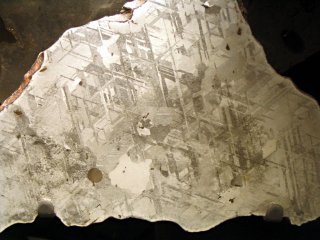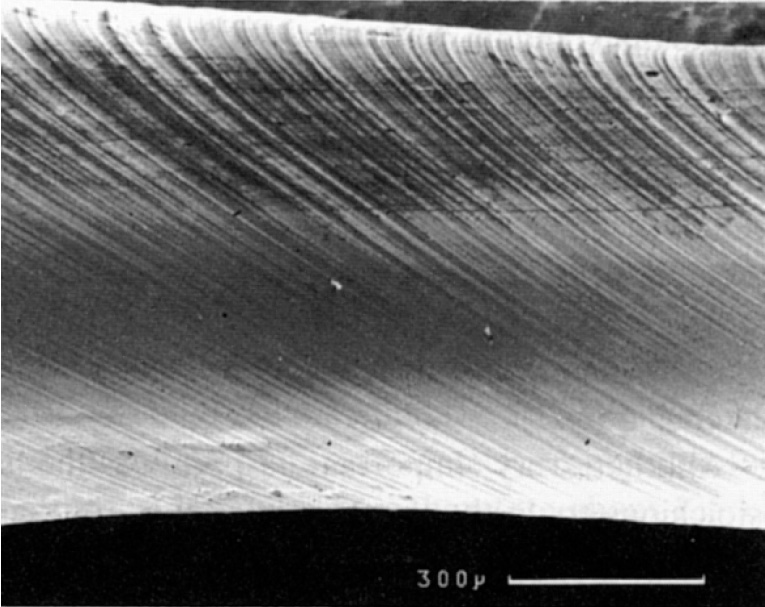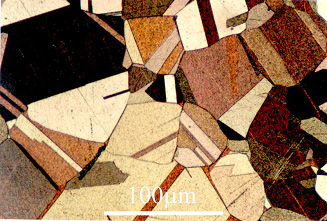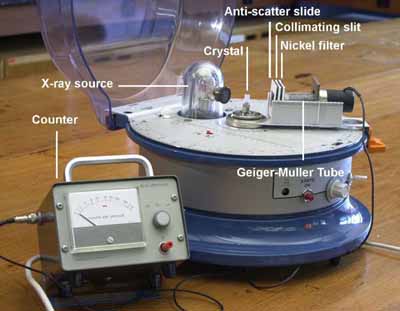2.8: Practical Uses
- Page ID
- 35348
An understanding of lattice planes is required to explain the form of many microstructural features of many materials. The faces of single crystals form on certain lattice planes, typically those with low indices.
In a similar way, the form of the microstructure in a polycrystalline material is strongly dependent on lattice planes. When a new Phase of material forms, the surfaces tend to be aligned on low index planes, as with single crystals. When a new solid phase is formed in another solid, the interfaces occur on along the most energetically favourable planes, where the two lattices are most coherent. This leads to plate-like precipitates forming, at specific angles to each other.

Section through an Fe-Ni meteorite showing plates at 60° to each other
One method of plastic deformation is by dislocation slip. Understanding lattice planes, and directions is essential to explain why dislocations move, combine and tangle in the observed way. More information can be obtained in the TLP - 'Slip in Single Crystals'

A scanning electron micrograph of a single crystal of cadmium
deforming by dislocation slip on 100 planes, forming steps
on the surface
![]() DoITPoMS standard terms of use
DoITPoMS standard terms of use
Twinning is where a part of the crystal is "flipped" to form a mirror image of the rest of the crystal, reflected in a particular lattice plane. This can either occur in annealing , or as a mechanism of plastic deformation.

Annealing twins in brass (DoITPoMS micrograph library)
X-ray diffraction is a method of determining the crystal structure of a material. By interpreting the diffraction patterns as reflections from lattice planes in the material, the structure can be determined. More information can be obtained in the TLP - 'X-ray diffraction '

Apparatus for carrying out single crystal X-ray diffraction.


